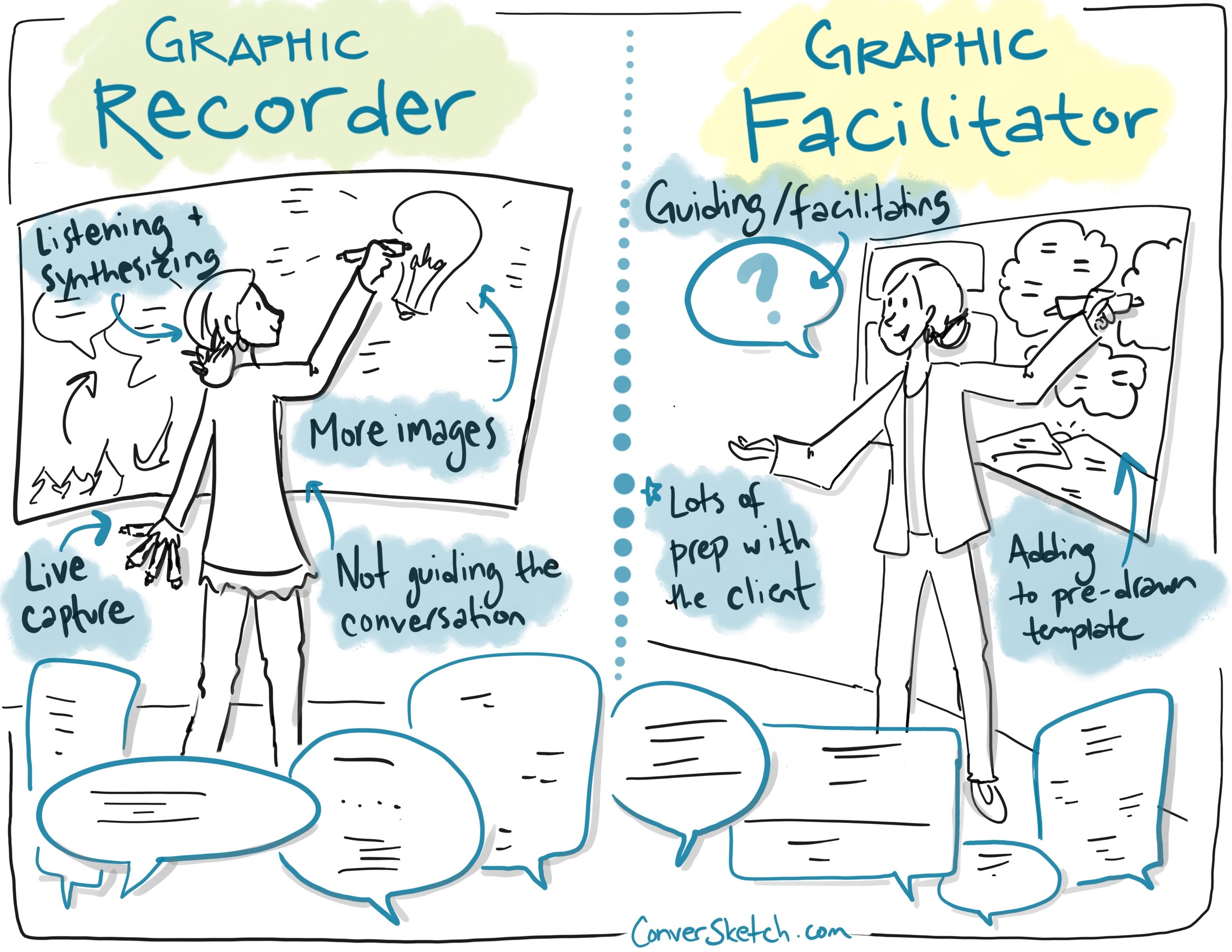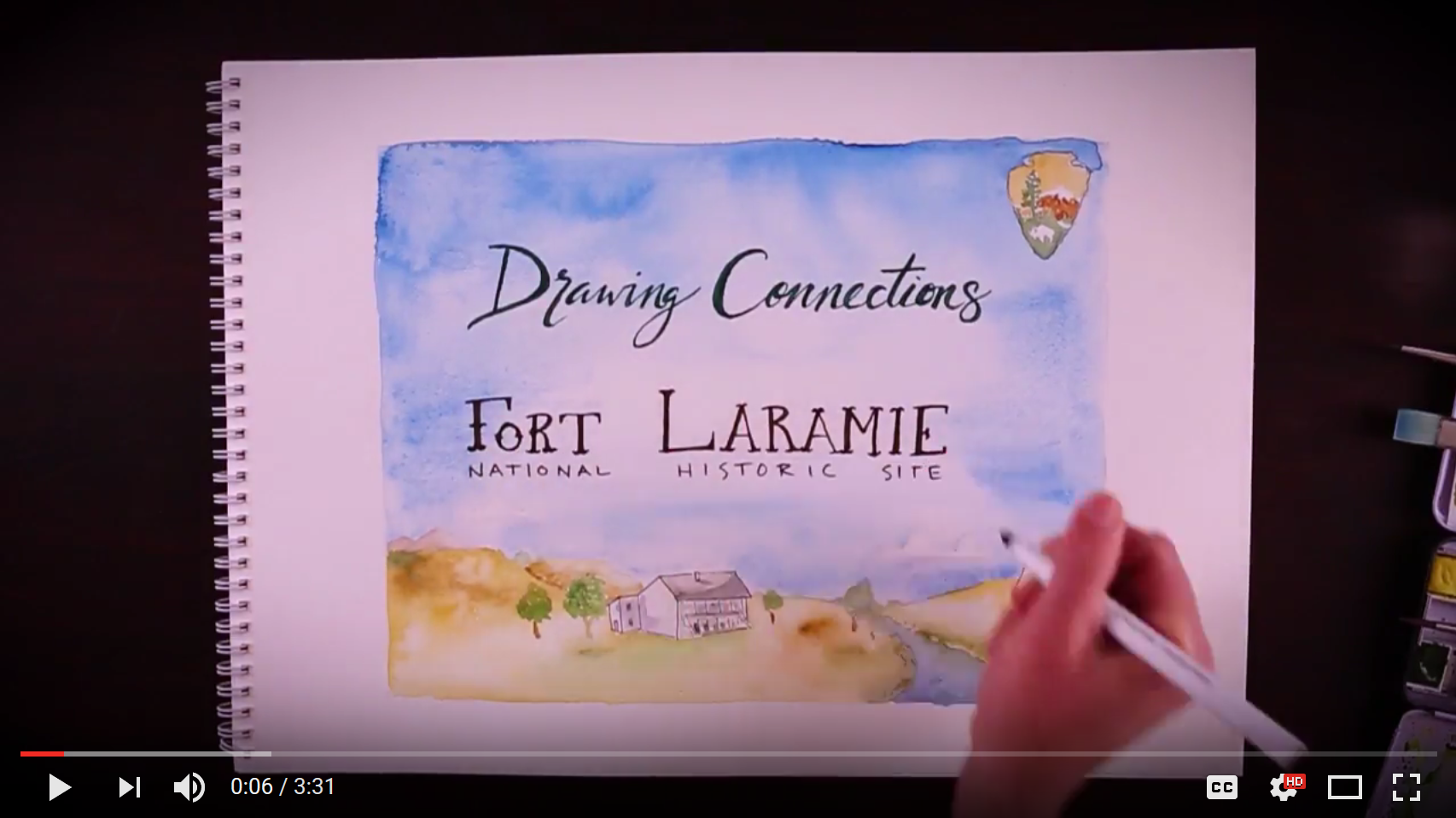There’s something ironic about a field that prides itself in helping simplify complex information through visuals, but there’s confusion about what exactly to call ourselves. Some say “graphic recorder”, some say “graphic facilitator”, others use the word “scribe”. You may have even heard “infodoodler” or “sketch artist” or “that person over there who’s drawing really fast!”.
Of course there are countless processes, strategies, partnerships and ways of visually supporting teams. So, to help you try to navigate the Sea of Visual Jargon to figure out what you’re looking for, here’s a comparison of the ConverSketch definitions of two of my most requested services: graphic recording and graphic facilitation.
Graphic Recorder
As a graphic recorder, my main focus is live visual capture of content discussed or presented during an event. I have 1-2 planning calls with my client to understand their goals for including a graphic recorder, and to make sure I understand expectations. I’m a (mostly quiet) partner and resource to the facilitator running the meeting. During the event, my charts tend to have more illustrations than when I’m facilitating because that’s what I’m entirely focused on. A note here: although the word "facilitation" is not in the job title here, graphic recorders are often playing a very important role in the facilitation process, supporting groups and the "official" facilitator as a partner in a very unique and useful visual way. After the event, you keep the original drawings, I photograph and edit the digital images of the charts and send you a list of suggestions for how to leverage them tailored to you based on our conversations.
Graphic Facilitator
As a graphic facilitator, my relationship with the client is more involved because not only am I capturing key content visually during the event, I’m also working with you to design the process, facilitate the event, and make sure your next steps are clear. We have 3-5 planning calls (and a lot more emails) as we co-create an agenda that will help your group reach its’ goals, think about how to make the most of the visuals, and make sure the space will support the group to do their best thinking. I often spend lots of time preparing large-scale visual “templates” we can fill in together during the meeting (although not always, sometimes we start with a blank sheet too), and can create custom worksheets for the participants. And, because drawing can be such a powerful tool to clarify and deepen idea development, graphic facilitators might design activities and processes to get the participants drawing out their ideas to build shared understanding. During the meeting, I am facilitating the process, checking in to make sure we’re on track, and capturing content visually, but often these charts have more words than pictures as I’m balancing both the capture and guiding the discussion. Again, after the event you keep the original drawings, I photograph and edit the digital images of the charts and send you a list of suggestions for how to leverage them tailored to you, along with a short 1-2 page summary and suggested action steps.
To make it even more interesting, some people use these terms interchangeably (i.e. they only use graphic facilitator even if they are solely focusing on visual capture), while others like me differentiate between the two. I think it's true that any sort of visual capture is a form of facilitation. Ultimately, I like to use the language that resonates with my clients and that they’ll remember, so yes, I do respond to “the artist”, “the graphic artist”, and “the woman with witty puns”. Again, these are only two options, but they can be confusing if you're new to visual lingo.
So, ask yourself, do you need a guide for the process? Or someone to focus entirely on visual capture? Both are useful in different situations. In the end, it’s important to have a conversation with the person you’re considering partnering with to be clear on expectations and to be sure you get set up for success!
Once again, thank you from my heart and soul for your support, great senses of humor, brilliant minds, collaboration and what you're each doing to make the world a better place.
Cheers, Karina
Now that I know the difference, I’d like to talk more about…
Where in the World is ConverSketch?
Last week I had the pleasure of being a partner and host for Frank and Carola, two trainers from Germany who teach the bikablo visual thinking method all over Europe. This summer, for the first time bikablo came to the US on an 8 stop tour, including Fort Collins. The training was a success, and we are looking into partnering for future training opportunities in Colorado! Thanks to the wonderful Wolverine Farm Letterpress & Publick House for the excellent venue!





